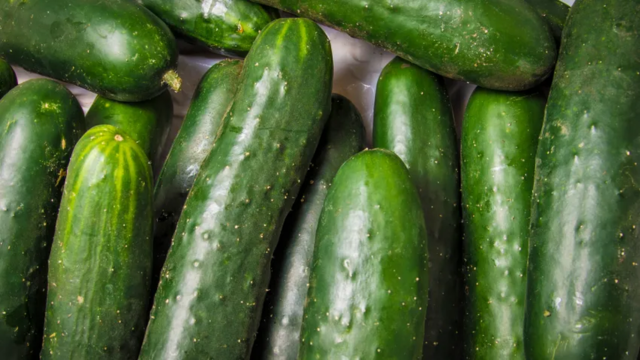A recent study conducted by Consumer Reports has identified the ten products that have been associated to the highest number of product recalls in the United States as well as the most severe sickness outbreaks caused by bacterial contamination.
According to the research, there was a significant increase of 41 percent in the number of food recalls that occurred in 2024 due to the possibility of contamination with salmonella, E. coli, and listeria in comparison to the previous year.
The products are ranked in the report according to the number of illnesses and deaths, the distance that the outbreaks have spread, the number of recalls, and the quantity of food that has been recalled.
The Centers for Disease Control and Prevention, the Food and Drug Administration, and the Department of Agriculture are the sources of the data here.
In addition, James E. Rogers, PhD, director and head of product and food safety testing at CR, provided some advice on how to safeguard oneself when consuming these foods.
What are the most dangerous foods for 2024?
Deli Meat
There have been multiple recalls implemented as a result of the discovery of listeria and salmonella in a variety of deli meats. A total of 165 illnesses and 87 hospitalizations were reported in the year 2024. There were additional ten deaths that were reported.
According to the information that was published, bacteria are frequently discovered in processing plants and on equipment at deli counters, which can result in meat that will be infected.
It is recommended by Rogers that you microwave meat until it is “piping hot” in order to protect oneself from bacteria. However, if this is not possible, prepackaged cold cuts are generally considered to be a safer option.
The cucumbers
Cucumbers were confirmed to contain Salmonella, which resulted in 664 reported infections and 173 recorded hospitalizations. None of the deaths were reported.
According to CR, the risk of consuming contaminated goods can be reduced by selecting fruits and vegetables that do not reveal any signs of bruising or damage to their skin. The removal of microorganisms is not guaranteed to be accomplished by washing and peeling.
Raw milk and cheese made from raw milk
Salmonella and other types of bacteria were discovered in both of these foods, and E. coli was discovered in raw milk cheese. In spite of the fact that there were no fatalities reported, there were 182 illnesses and 29 hospitalizations identified.
According to the article, raw milk should not be consumed, and the Food and Drug Administration mandates that raw milk cheese must be matured for a minimum of sixty days before it can be sold.
Cheeses made with cotija and queso fresco
As a result of its high water content and low acidity, soft cheese was identified as a “repeat offender” in the report. This is due to the fact that it makes it simpler for listeria to survive.
In 2024, the products were responsible for 26 illnesses that were documented and 23 hospitalizations that were reported.
Cheeses such as these should be avoided until they are already included into a recipe, according to CR, in order to reduce the likelihood of eating bacteria.
The eggs
According to the article, salmonella has the potential to contaminate the interior of an egg, making them potentially harmful. This past year, there were 93 illnesses that were reported and 34 hospitalizations. None of the deaths were reported.
According to CR, in order to protect yourself from bacteria, you should wash your hands after handling eggs and throw away any eggs that have shells that are broken. When cooking eggs, it is important to ensure that both the white and the yolk are firm.
Onions (plural)
There is a possibility that raw onions carry E. coli, which makes them harmful to consume, as stated in the research. In the year 2024, there were 104 illnesses that were documented, 34 hospitalizations that were reported, and one death that was reported.
CR asserts that the inner layers of an onion are less likely to be infected and pose a lower risk of contamination when consumed directly.
Greens with leaves
Both of the E. coli incidents that occurred in the previous year were linked to different leafy greens, such as spinach and a mix of romaine and iceberg lettuce with spinach.
The number of illnesses that were documented was 117, and there were 36 hospitalizations and one death that were reported.
According to CR, the usage of hydroponic lettuce, which is grown in greenhouses and is therefore less likely to be polluted by animal excrement, can help reduce the likelihood of being unwell.
Carrots grown organically
The consumption of organic carrots was another food that was associated to E. coli infections. One person passed away, twenty people were hospitalized, and there were forty-eight diseases that were documented during the previous year.
According to CR, the most effective method for ensuring that carrots are safe to consume is to prepare them.
The organic basil
According to the findings of the investigation, herbs, like leafy greens, are prone to contamination with contaminants. In the previous year, there was an outbreak of salmonella that was related to organic basil, which resulted in 36 illnesses that were reported and four hospitalizations.
The most effective method of protection, according to Rogers, is to thoroughly rinse herbs and prepare them rather than consuming them in their raw form.
Cooked poultry and meat
At the end of the previous year, listeria was discovered in cooked poultry items, despite the fact that there were no documented cases of illness, hospitalizations, or deaths.
Before consuming frozen foods, CR suggests heating them for a sufficient amount of time.





More Stories
New Report Reveals the 10 Riskiest Foods for Your Health
New Report Reveals the 10 Riskiest Foods for Your Health
New Report Reveals the 10 Riskiest Foods for Your Health